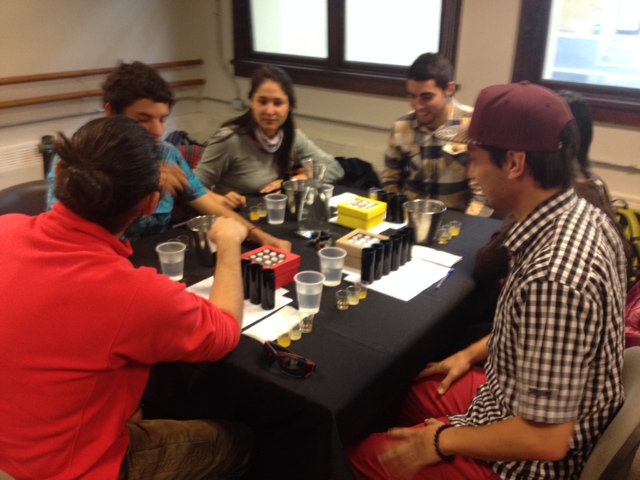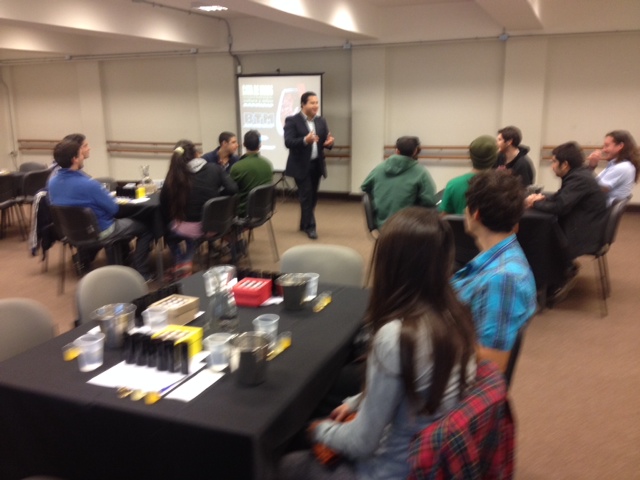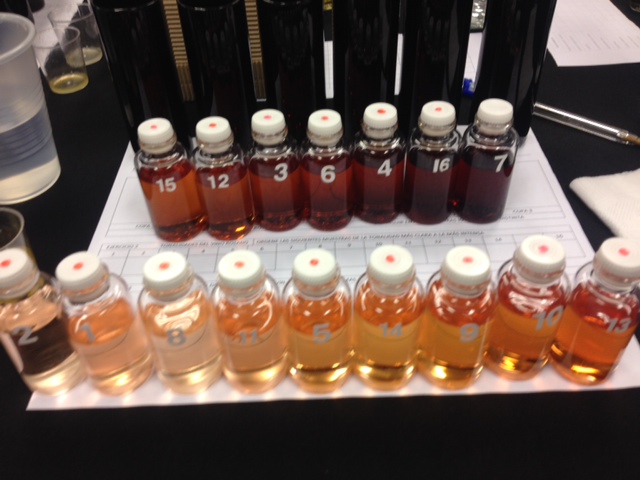Services

VinoData has chosen experienced partners, amongst them software development partners oriented to vinification processes management and business intelligence, precision viticulture service operators specialised on vine monitoring, irrigation, harvest optimisation, crop logistics and input management as well as experienced consultants in the growing field of enotourism.
Pursuing to serve the Chilean wine industry aim for excellence VinoData has selected specialised partners in diverse fields to increase the knowledge’s offer to the industry. VinoData effort is oriented to provide services for excellence to the whole extension of the wine industry value chain.
Digital Cartography of Chilean vineyard in the Maule region
The project called “Digital Cartography of Chilean vineyard in the Maule region” corresponds to a proposal elaborated and implemented by the Centre for Geoinformatics (CENGEO) and the Technology Center of the Vine and Wine (CTVV) of the University of Talca funded by FIC-Maule through the Fundación para la Innovación Agraria (FIA), and envisages a total duration of 2 years for implementation. The proposal main purpose is making a georeferenced data base of wine of the Maule Region, in which information production units will meet with their respective technical, productive and social attributes and be collected through surveys conducted by crews visiting field and producers. The database generated with the information collected will be made available to users through a webmapping application that will allow view information about his heritage and others variables of interest: areas, planting year, variety…. In addition, this web tool will provide producers, updating information on their properties, changes in treatments and activities about their assets at the end of each production period.
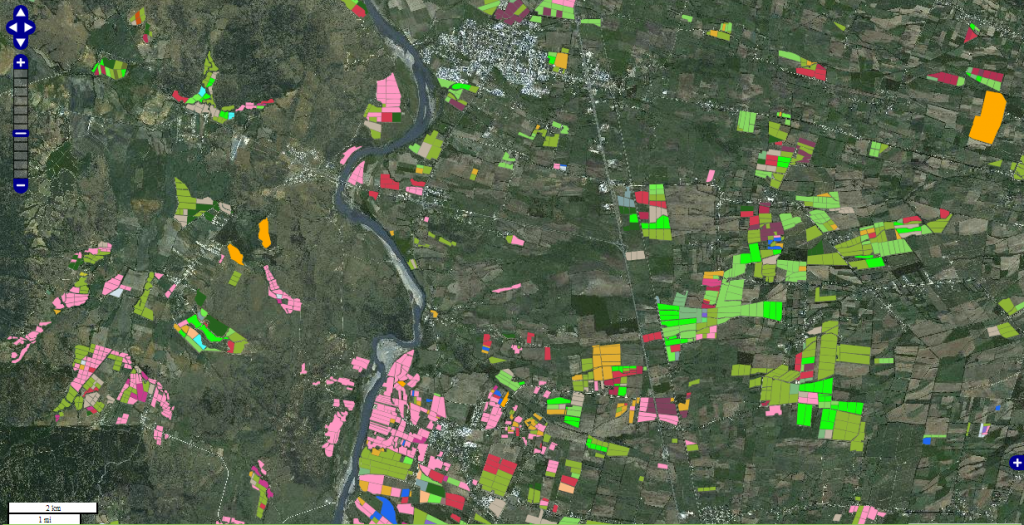
Precision viticulture services
Over the years, a number of avant-garde companies in possession of state of the art technology have been working with advanced grape growers and winemakers around the world, a trend particularly strong outside Europe, helping them through precision viticulture to increase their vineyards profitability. Multispectral imagery interpretation is one of the ways to better understand how vigour and health of a vineyard (or weeds) can vary. The use of variability maps helps to significantly increase profits via either increase variability or to reduce it within a vineyard. Grapes belonging to a parcel might mature earlier or later than the grapes of other parcel just because of their growing location and this can be identifying with variability maps. Multispectral imagery is proven to be needed mainly twice a year, once at flowering and at veraison.
At flowering multispectral imagery helps to reduce variability and inputs in any chosen period of time. The images will allow finding the variability in the field caused by sun exposition, irrigation, soil type, slopes, and others. Images also can show where to reduce that variability for the current season. At flowering it is possible to make changes on watering planning on time to reduce variability. On the other hand at veraison multispectral images interpretation can effectively help to plan split picking. The use of images with the help of ground samples from the vineyard make possible to draw an extremely accurate vigour, health and ripening map to make a precise discriminated picking.
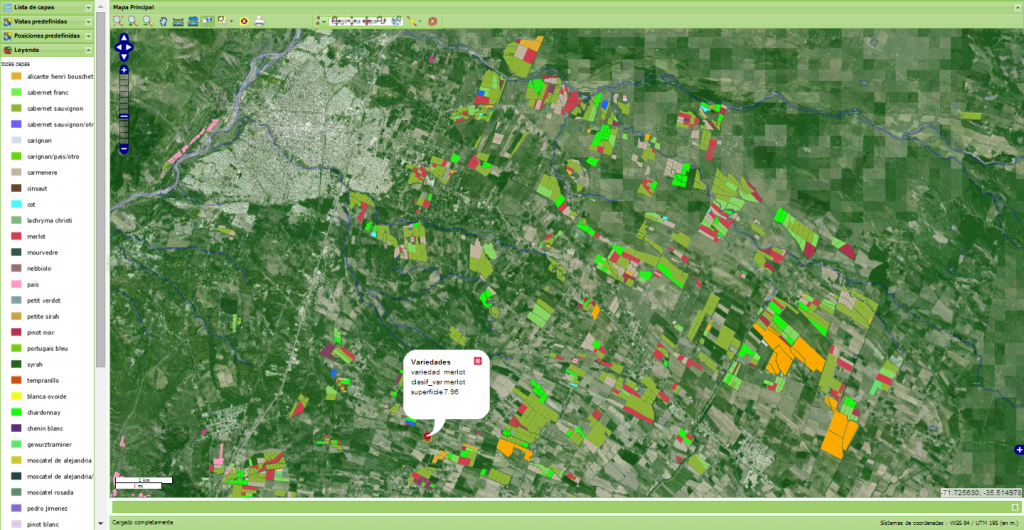
Vineyard discriminate harvest
Discriminate harvest is a practice performed successfully from time immemorial, probably born naturally from Roman Gaul times and kept faithfully to today modern France. Wise grape growers discriminate the ripening in order to increase quality grapes and consequently profits, even in some cases they pick berry by berry which have become the foundation of the fame of some of the most expensive French wines. The expensive and hard working practice performed traditionally can be replaced via variability maps which are used to locate and discriminate quality grapes which could then be picked at optimal times, or into different bins.
Vineyards inputs reduction
If it is safe to reduce inputs without compromising the quality of the fruit could be shown by a variability map. A reduction of inputs where they are not necessary can increase significantly vineyard profitability. Many growers trust in a virtual ‘mud-map’ in their minds of where inputs can be reduced, multispectral imaging turns that mental map into a science rigorous map shareable to do better.
Decreasing vineyards variability
Precision viticulture can convey to an enormous reduction in variability. Multispectral imaging assists this process providing a variability map to highlight where variability needs to be reduced or via the provision of maps showing the change in variability reduction over a period of time. Multispectral imaging is a scientific and robust replacement method of significant hard labour of vineyard surveillance variability in the long term.
Precision viticulture presentation (Présentation d’oenoview en anglais)
Enotourism consultancy partnership
Enotourism is probably the best manner to seduce a potential wine lover making him and his close circle fans of a particular wine brand. Enotourism is also the most pleasant road to become familiar with the vineyards surrounding area knowing the region where it is established the wine industry. But above all it is a very good business. The sightseeing of the countryside taking walks on the estates, meeting local experts, and learns about the winemaking process and tasting the wine produced tied to the visiting area reports many benefits. Wine tour are long popular in France (Champagne, Bordeaux, Loire), the USA (Napa Valley in California), South Africa (mainly Stellenbosh) Australia (Hunter Valley and Barossa Valley mainly) and Italy (Tuscany/Chianti, Umbria, Emilia-Romagna – worth 2.5 billion euros per year in total, expected to double), and recently hitting the headlines in Spain with spectacular buildings by leading world architects such as Frank Gehry (Bodega Marqués de Riscal and hotel in La Rioja, featuring a grape-based products spa) and Zaha Hadid (Bodega López de Heredia, also in La Rioja). Enotourism is slowly but sure taking off in the Chilean wine growing areas, in spite for some wineries means a significant part of their income. Meanwhile, in an improvising way which it is possible to change to a better and professional manner.
Wine tasting worshops as well as wineries tours and studies on the field including vineyards visiting are perform as part of the training programe for Enotourism, particularly to prepare wine tour guides and enotourism workforce.
